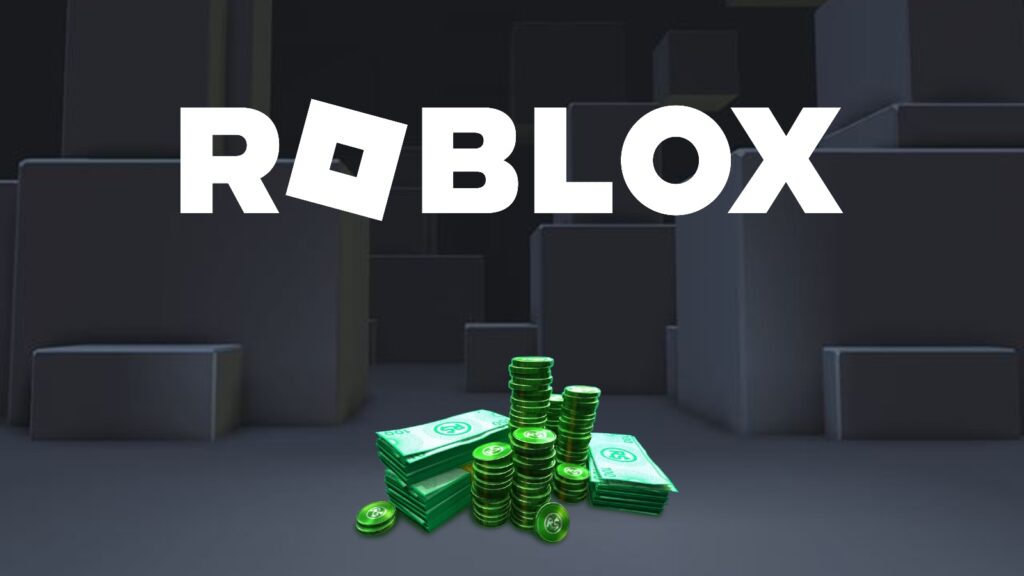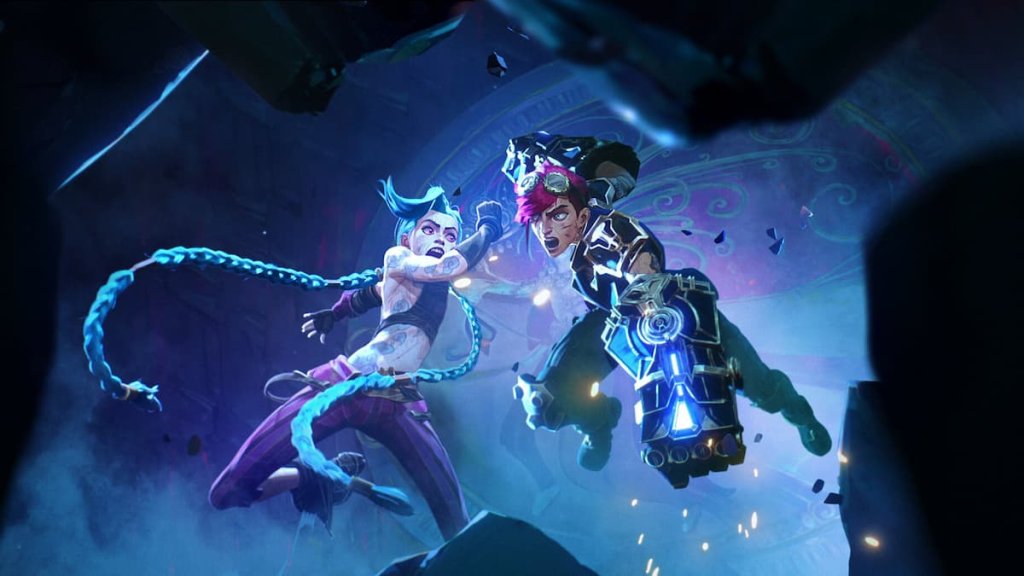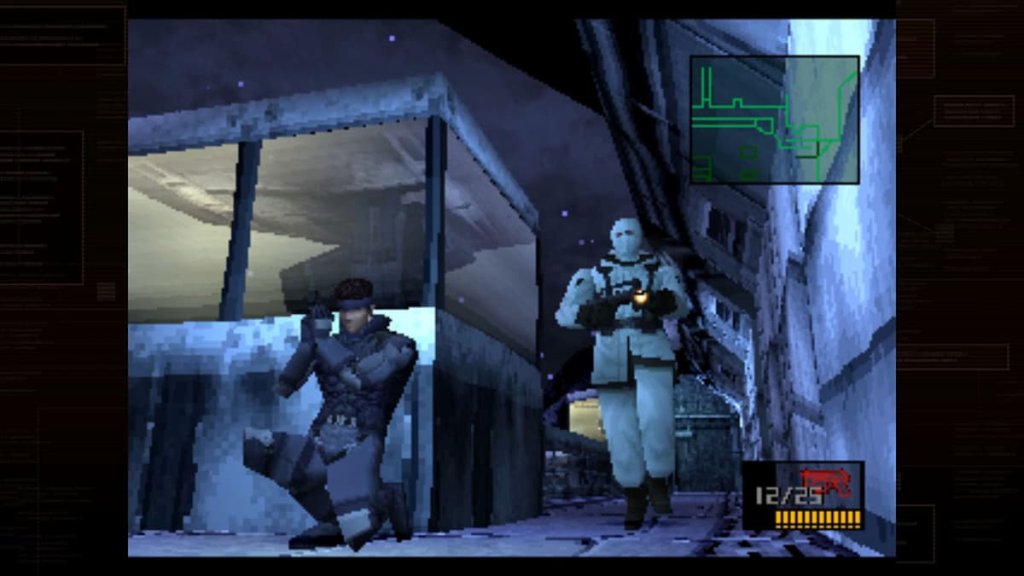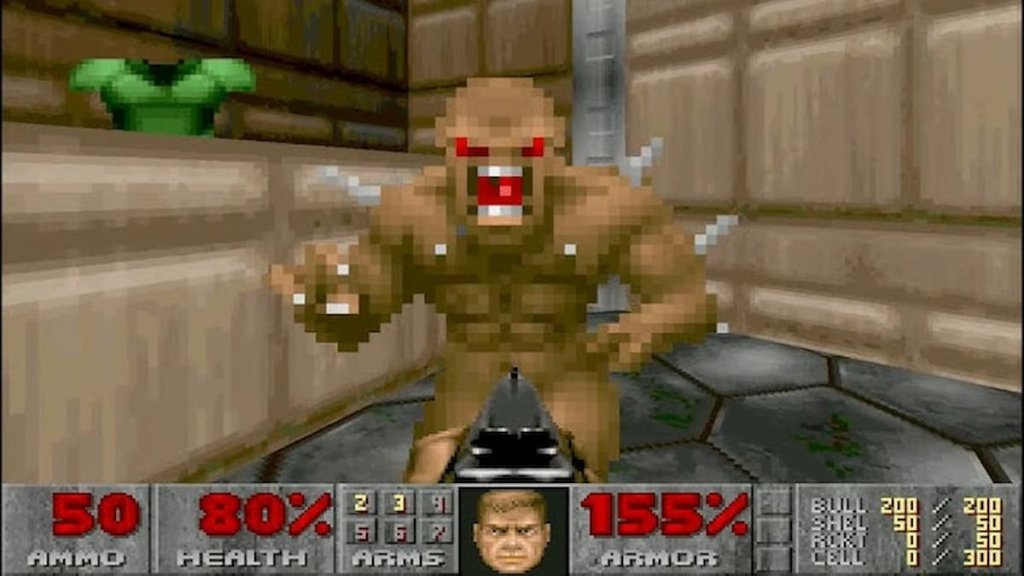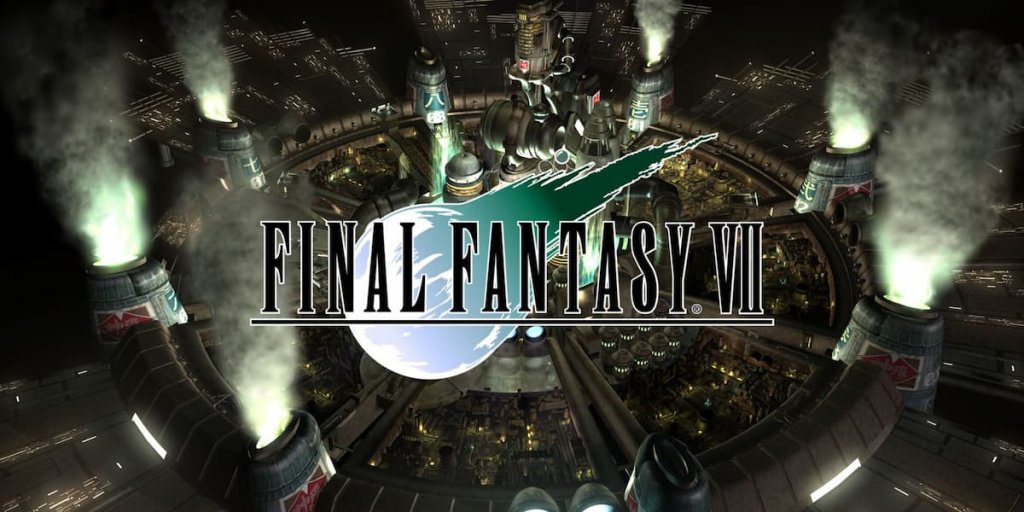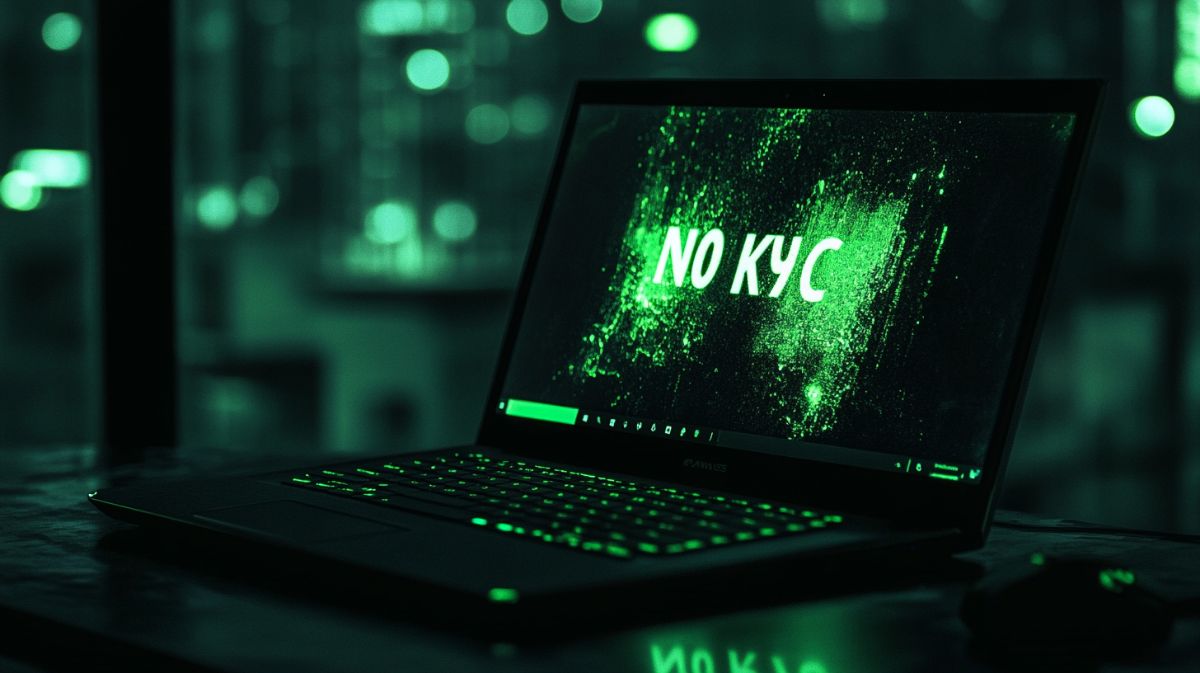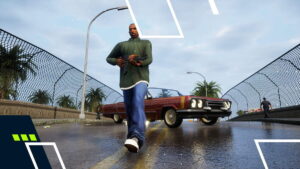All Wolfenstein Games in Order (1981-2019); Games Ranked By Release and Timeline
Since 1981, the Wolfenstein franchise, which was once just a very simple stealth-action title, has now become a sprawling alternate-history saga that blends first-person shooting, horror, and role play. Even though early instalments, such as Castle Wolfenstein, had stealth and puzzle elements, Wolfenstein 3D by ID Software established it in the first-person shooter genre. Moreover, subsequent MachineGames reboots and sequels added layers of character development, branch narratives, and themes surrounding the resistance against a victorious Nazi regime. Below follows an extended look at all Wolfenstein games in order of release and story development.
- 1. Wolfenstein Games in Order of Release
- 2. Why Play in Lore Order
- 3. How to Play Wolfenstein Games in Order (Chronologically)
- 4. Every Wolfenstein Game in Story Order
- Castle Wolfenstein (1981)
- Beyond Castle Wolfenstein (1984)
- Spear of Destiny (1992)
- Wolfenstein 3D (1992)
- Return to Castle Wolfenstein (2001)
- Wolfenstein RPG (2008)
- Wolfenstein (2009)
- The Old Blood (2015)
- The New Order (2014)
- The New Colossus (2017)
- Youngblood (2019)
- Cyberpilot (2019)
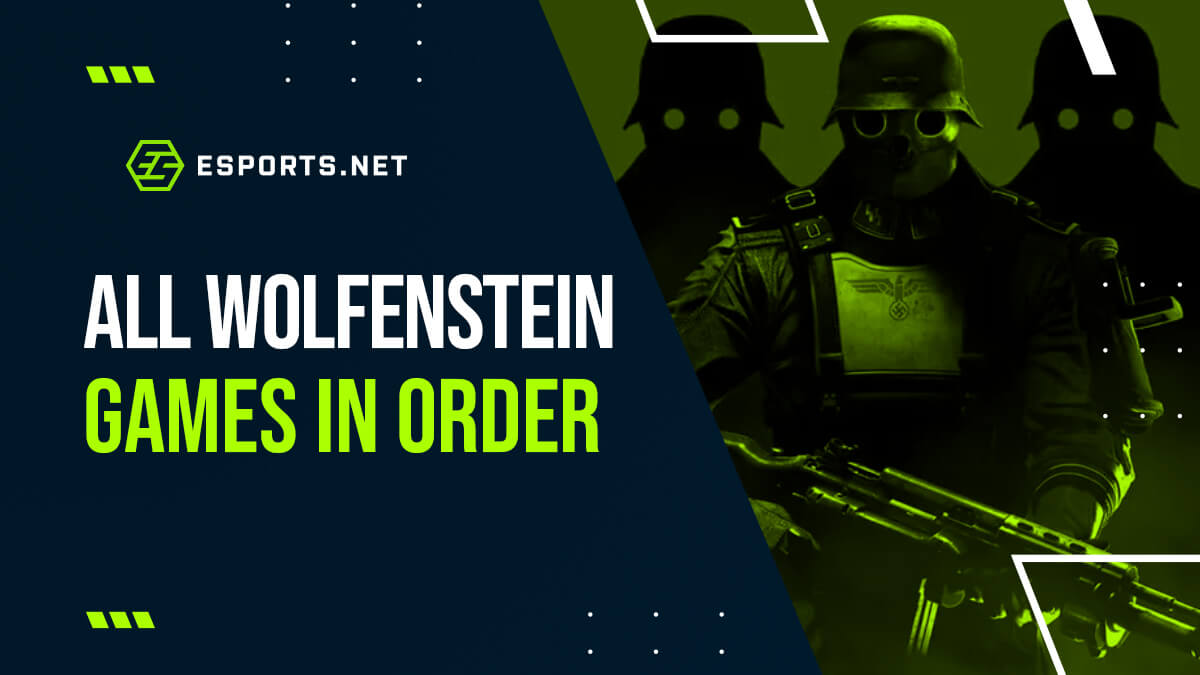
Wolfenstein Games in Order of Release
Here are all the Wolfenstein games in order they first came out, plus a quick note on each:
- Castle Wolfenstein (1981) – Stealth roots, sneaking around a Nazi castle.
- Beyond Castle Wolfenstein (1984) – Bigger levels, trickier puzzles, bombin’ Hitler’s bunker.
- Spear of Destiny (1992) – Expansion to 3D classic, hunt down a magical spear.
- Wolfenstein 3D (1992) – The one that changed shooters forever, meet B.J. Blazkowicz.
- Return to Castle Wolfenstein (2001) – Horror + FPS mix with occult experiments.
- Wolfenstein: Enemy Territory (2003) – Free online team battles, objective-based.
- Wolfenstein RPG (2008) – Mobile, turn-based, steampunk flair.
- Wolfenstein (2009) – Reboot with hub world, occult powers.
- Wolfenstein: The New Order (2014) – 1960s alternate world, Nazis win WWII.
- Wolfenstein: The Old Blood (2015) – Prequel to New Order, two-part castle raid.
- Wolfenstein II: The New Colossus (2017) – Direct sequel, 1961 America under Nazi rule.
- Wolfenstein: Youngblood (2019) – Co-op with B.J.’s twin daughters in 1980s Paris.
- Wolfenstein: Cyberpilot (2019) – VR side-story hacking mechs for the Resistance.
Why Play in Lore Order
If you follow release dates, you see how the tech and design got better over time; from blocky sprites to full-blown storytelling. But if you play in the actual story timeline, you catch B.J.’s whole arc neat and tidy. You go from sneaking through 1940s castles right up to 1980s high-tech Resistance fights, so plot twists land harder and callbacks feel way cooler.
How to Play Wolfenstein Games in Order (Chronologically)
So, here’s how to play the Wolfenstein games in chronological order if you like that smooth narrative flow in gaming:
- Castle Wolfenstein (1940s setting)
- Beyond Castle Wolfenstein (soon after)
- Spear of Destiny (leads into 3D)
- Wolfenstein 3D (1943)
- Return to Castle Wolfenstein (1943)
- Wolfenstein RPG (mid-1940s)
- Wolfenstein (2009 reboot fits after occult stuff)
- The Old Blood (1946 prologue to New Order)
- The New Order (1960)
- The New Colossus (1961)
- Youngblood & Cyberpilot (1980s Paris)
Every Wolfenstein Game in Story Order
Castle Wolfenstein (1981)
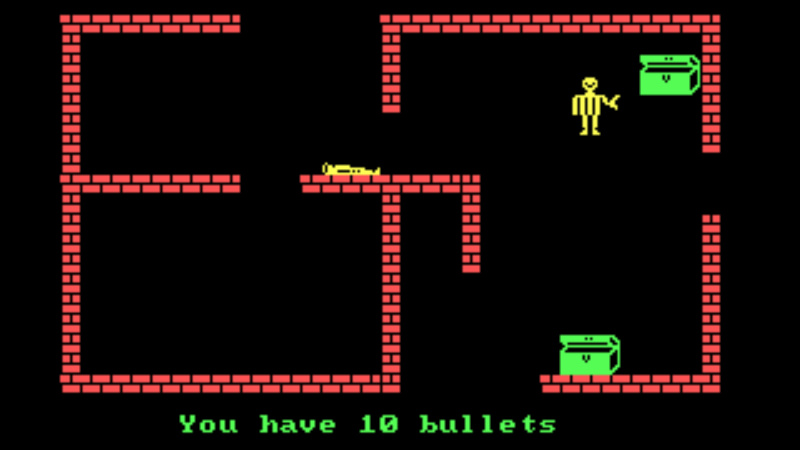
Image Credits: Muse Software
Castle Wolfeinstein was a rescue-mission game: you had to sneak past guards and get away with papers instead of gunning ’em down. And since bullets were tough to come by, you had to be extra careful about shooting. It was all much more of a puzzle game than an action one. The guard routes changed at random, so you couldn’t just memorise every step. Later ports to Atari 8-bit, Commodore 64, and MS-DOS broadened its audience, cementing its reputation as a stealth-action classic long before the term “stealth game” existed
Beyond Castle Wolfenstein (1984)

Image Credits: Muse Software
Three years later, Beyond Castle Wolfenstein amps everything up: bigger maps, more items to juggle, and a proper mission: blow up Hitler’s bunker. It’s not enough to just wander around a castle; you’re against the clock to plant bombs right under the Führer’s nose. AI is also better than before. It makes the guards not just follow a set path, so you have to sneak a lot smarter. It launched on Apple II, C64, Atari, and DOS all at once, making it one of the earliest games you could play stealth-style, no matter your old-school system.
Spear of Destiny (1992)
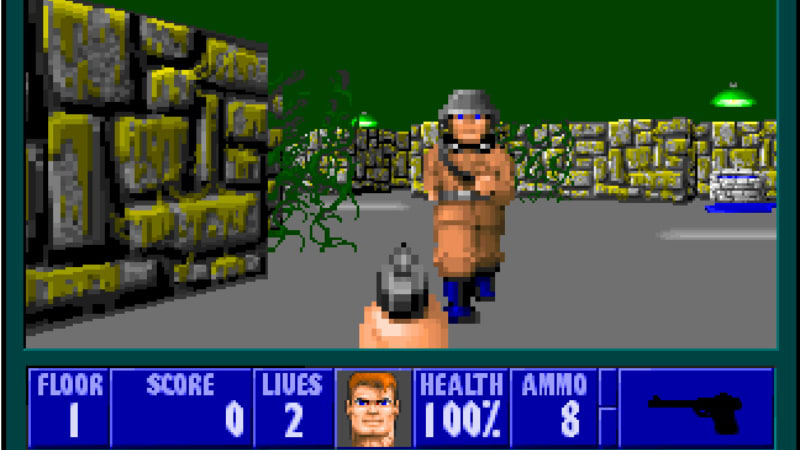
Image Credits: ID Software
Right before Wolfenstein 3D, we had Spear of Destiny, a standalone prequel where B.J. hunts for the Spear of Longinus. It played just like 3D but with a few extra mutant baddies and keys to discover to make you feel like you were exploring an even deeper ID Software shooter realm. It was short on the playtime duration but tantalizingly long enough to give the player a taste of what Wolfenstein 3D would soon deliver.
Wolfenstein 3D (1992)
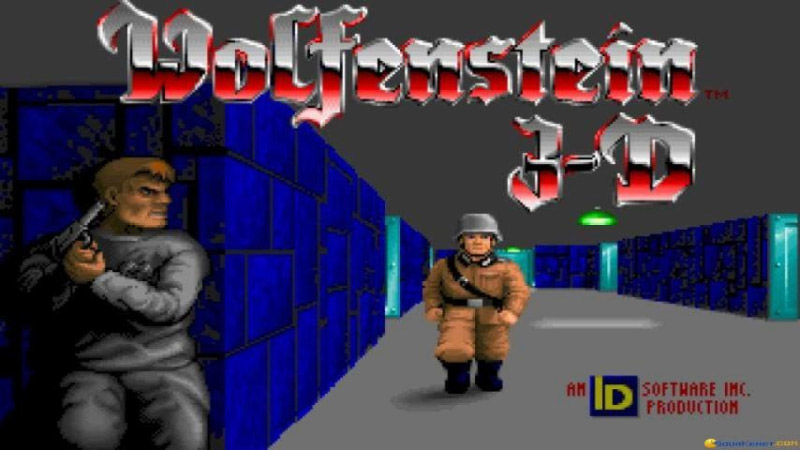
Image Credits: ID Software
Then came Wolfenstein 3D on May 5, 1992, and boom! The first-person shooter was born. Corridors looked 3D thanks to ray-casting, health packs and ammo crates littered the floors, and you had weapons from a humble pistol to a berserker-mode chaingun. It was fast, it was loud, and sharing the first episode for free via shareware was genius marketing. Sure, some countries banned it ’cause of Nazi symbols, but that only made it more infamous. Without it, we’d never have Doom or Quake.
Return to Castle Wolfenstein (2001)
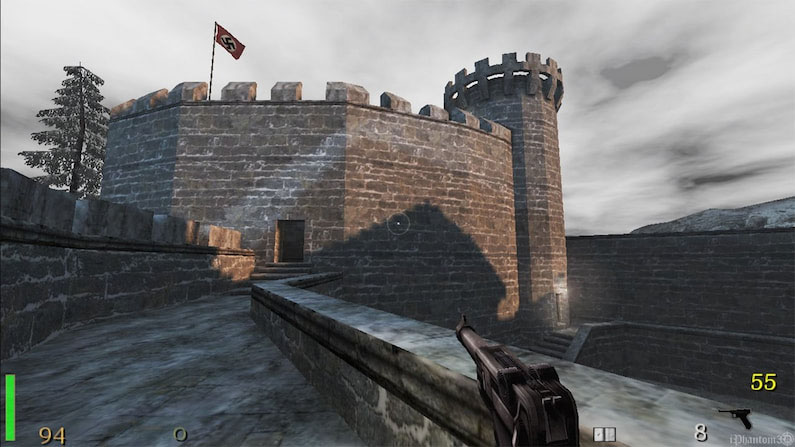
Image Credits: ID Software
Fast forward to November 20, 2001, when Return to Castle Wolfenstein surprised everyone by mixing Quake III tech with occult horror. You play B.J. who’s escaping SS paranormal labs. Think zombie soldiers, werewolves, and secret rituals. Stealth comes back, but now you’ve got modern FPS combat and a story told in cutscenes. And hey, multiplayer got spun off into Enemy Territory, which became this beloved team-objective shooter, influencing games like Battlefield and Overwatch down the line.
Wolfenstein RPG (2008)
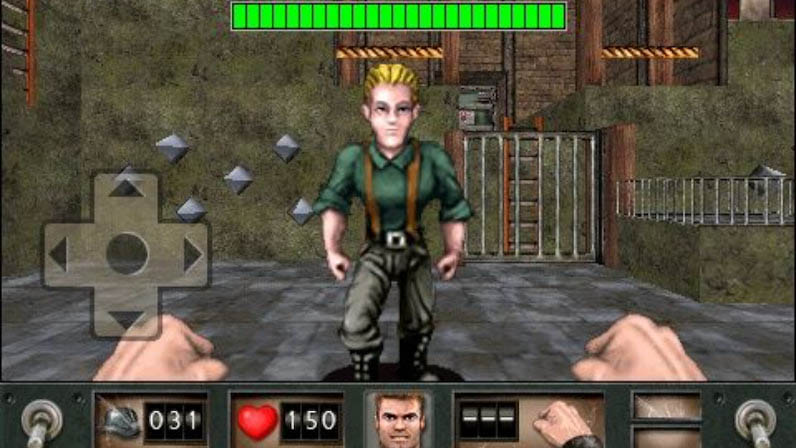
Image Credits: ID Software
In 2008, Wolfenstein went turn-based with Wolfenstein RPG, first on phones, then iOS in ’09. Nine levels full of puzzles, levels-up, and stat choices; kind of like Doom meets Fallout in a castle. You still shoot Nazis, but now you pick perks, upgrade health, and fuss with gadgets. It wasn’t everyone’s cup of tea, but it proved Wolfenstein could adapt to handhelds and mix genres, even if it stayed niche.
Wolfenstein (2009)
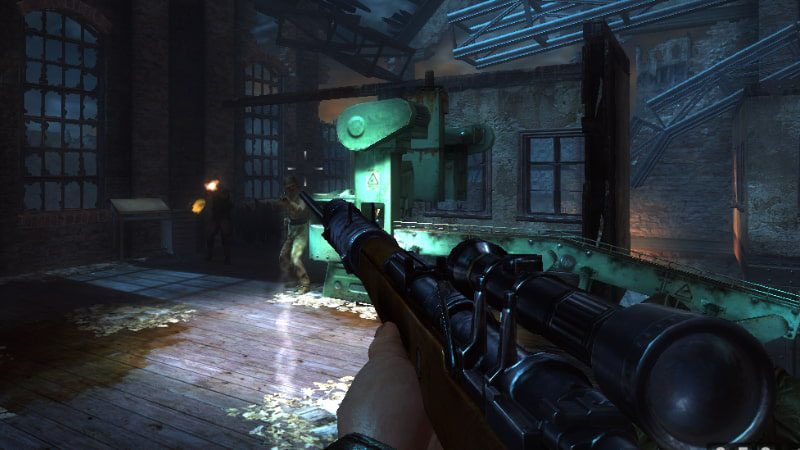
Image Credit: Raven Software
Activision rebooted the series in August 2009 with Wolfenstein, where B.J. gets supernatural powers and wanders an open hub castle hunting occult artifacts. It’s part platformer, part shooter, part horror, and definitely darker than fans expected. You blast ghosts and golems as often as you do Nazi grunts, and while the powers were cool, some folks missed the old linear, run-and-gun pace.
The Old Blood (2015)
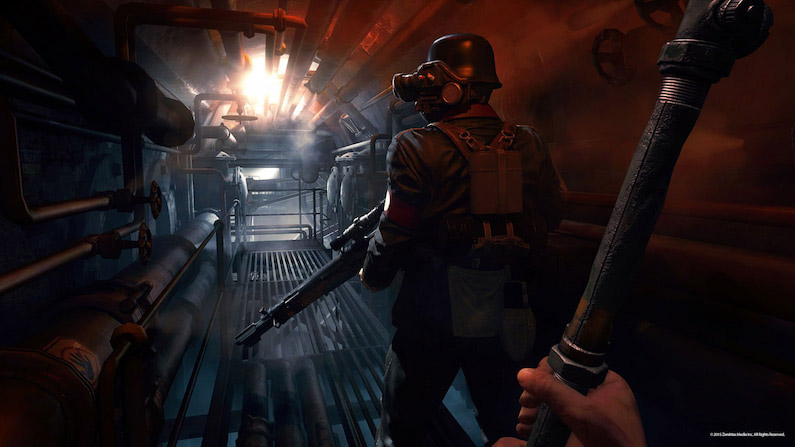
Image Credit: Raven Software
May 5, 2015 brought us The Old Blood, a prequel to The New Order that splits into two missions: first, break into Castle Wolfenstein for intel, then fight your way out through a spooky Bavarian village. It’s packed with nods to early Wolfenstein such as hidden passages and classic corridors, but with modern stealth takedowns and brutal melee kills. Shorter than a full game but so tight and well-paced, it feels like a love letter to anyone who grew up sneaking through pixelated rooms.
The New Order (2014)
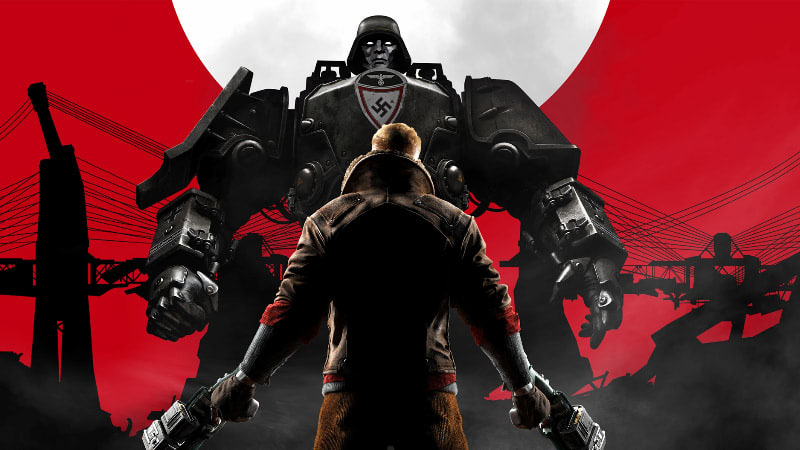
Image Credit: Raven Software
Even though it came out a bit before Old Blood, The New Order (May 20, 2014) is where MachineGames really nailed the mix of story and shooting. Imagine a 1960 where Nazis control everything. You wake from a coma to start a one-man Resistance. The characters have voices and emotions, you make dialogue choices, and levels range from London rooftops to secret bunkers. The cover-based shooting and perks system felt fresh, and it showed that FPS can tell a deep, emotional tale.
The New Colossus (2017)
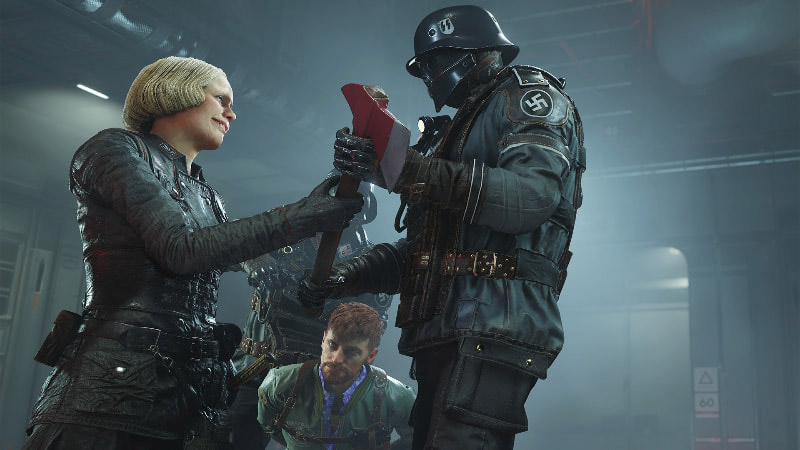
Image Credit: Raven Software
Drop into The New Colossus in October 2017 and you’re in ’61 America, Nazi-occupied. B.J.’s leading the charge on an old U-boat, then blowing up the streets of New Orleans and Manhattan. It’s got drama-like real feels and huge set-pieces: robot dogs, armoured convoys, even a disturbingly twisted carnival level. Gameplay-wise, it’s tighter than New Order, with more upgrade options and side missions that flesh out the Resistance fight on every coast.
Youngblood (2019)
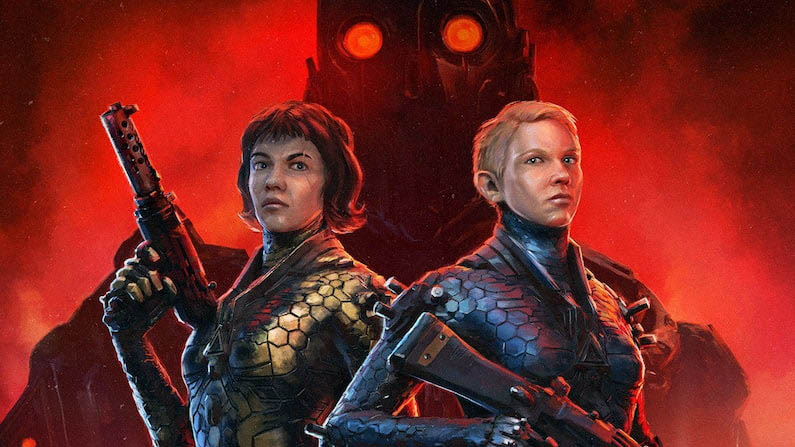
Image Credit: Raven Software
By July 2019, Wolfenstein was in the hands of B.J.’s twin daughters. Youngblood drops you in 80s Paris doing co-op missions to find your dad. Looting, RPG-style levelling, and choosing among different skill trees are all part of the game. Gunplay is well done, and co-op is really fun. But levels can feel somewhat repetitive, and the story is on the lighter side. Still, shooting Nazis alongside a buddy is a time well spent.
Cyberpilot (2019)
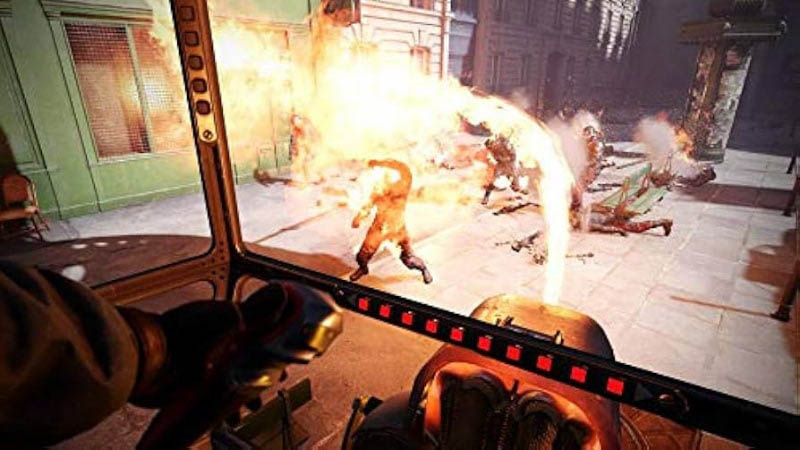
Image Credit: Raven Software
Cyberpilot tried something different in 2019: VR. You hack into Nazi war machines, control the mechs, and sneak through terminals for the Paris Resistance. It’s a short game, two or three hours at most, but the novelty of seeing the Wolfenstein world through VR is interesting. The controls can be finicky; it plays more like a tech demo than a fully-fledged game. But it opens corridors of possibilities on how this universe can evolve into new frontiers, and that, in itself, is exciting!
